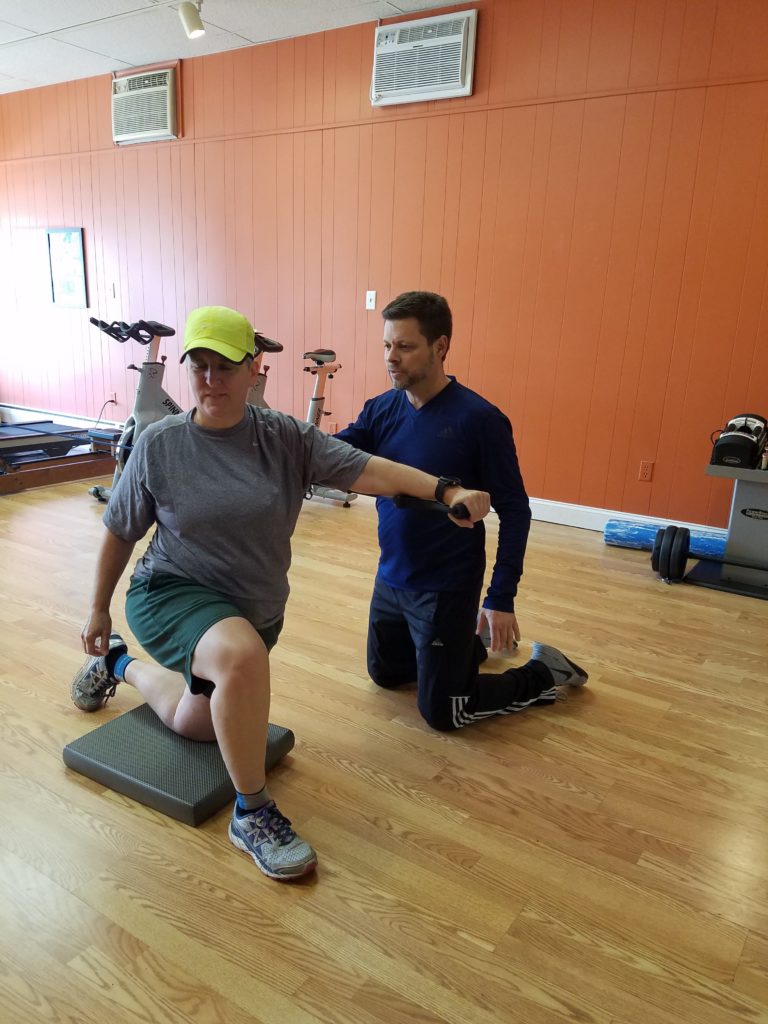As we continue down this theme of a New Year, New You – I decided to get some assistance in discussing how a personal trainer can be a part of this process. As such, I enlisted the help of Don Larkin, Co-Owner of Reach in Camp Hill, PA.
There was a popular Planet Fitness television commercial a few years ago that depicted a huge muscle-bound guy waddling through a gym saying “I lift things up and put them down.” In addition to being hilarious, the message was clear: this is what people think of when they think about gyms and the people who spend a lot of time in them. This impression often extends to personal trainers. We are all self-absorbed hard-core meatheads living in a world of bench presses, protein shakes, and single-digit body fat.
Sure, there’s some truth to the stereotype among those who don’t take the career seriously and only became trainers because they like being in the gym and the convenience it provides for them to train themselves. They’re not exactly the kind of person you turn to for health guidance.
Professional personal trainers, on the other hand, chose their career because they enjoy helping people, and gain satisfaction sharing in others’ accomplishments. Most possess a wide range of knowledge related to exercise, nutrition, health, and wellness. They are an integral part of their clients’ health and wellness networks. Many often partner with a wide range of other care providers, including physical therapists, massage therapists, chiropractors, physicians, dietitians, and more. Frequent interactions allow the best trainers to serve as the hub of their clients’ health and wellness networks. Their expertise enables them to help you know when it’s time to seek care from one of these other people.

The training process begins with a detailed conversation about your goals, health and injury history, current and past exercise and nutrition habits, lifestyle, stress levels, sleep quality, activity and nutrition preferences, etc. All this is done before they do a single exercise with you. After this comprehensive consultation, the physical evaluation will be completed. They will assess your movement quality to identify areas where you move well, and areas where there is room for improvement. Cardiovascular fitness may also be part of this assessment. It typically also includes things you would expect, like weight, body composition, and possibly measurements or other screenings such as checking your blood pressure.
After all this information has been collected, your program can be designed. A good comprehensive program takes all of the above factors into consideration and is designed to provide health benefits that you likely weren’t even thinking about before you met with the trainer. Your program should be adjusted from session to session based on how you felt after the previous session and how you feel that day, both physically and emotionally. They will also change your program completely every 4 to 8 weeks to ensure nearly continual improvement.
The right program designed for the individual that evolves with them will provide health benefits that typically include healthier blood pressure, better insulin sensitivity, reduced lower back pain, higher energy levels, and feeling better in general. You’ll still be better able to lift things up and put them down better than before.
Selecting a trainer is a topic for another day, but a good place to start is to ask a potential trainer what their process is. If it’s not similar to the steps I mentioned, keep shopping.
If you should have any questions about how personal training can help you reach YOUR goals this year, please reach out to Don directly at
trainwithdon@gmail.com
